with 🎙️ Maika Pellegrino – Senior Project Manager, Water & Wastewater @Jacobs
💧 Jacobs was the World’s n°1 Design Firm for the third year in a row as per ENR’s ranking in 2020
What we covered:
🍏 How Engineering is at the same time a fundamental pillar and an often-overlooked field of the Water Industry.
🍏 How Equipment, Procurement, and Construction companies play different roles from one geography to another
🍏 How EPCs, OEMs, Consultants and Industry Players collaborate, intersect or compete
🍏 How Consultant Engineers deal with long-term project planning and customer relationships
🍏 How their catalyst role brings many skills and professions together to warranty a successful outcome
🍏 How engineering is another way to play Lego
🍏 How dealing with a client’s vision sometimes goes far beyond technical aspects
🍏 How engineers cannot be agnostic and have their favorite treatments (but also know when to be pragmatic!)
🍏 What’s the right level of granularity to manage a project, and shall you really care about this valve?
🍏 How to deal with innovation and how this goes again far beyond the technical side of things
🍏 How having nature working for you might be challenging but so rewarding
🍏 How knowledge vanishes with the Silver Wave (and what to do about it)
🍏 How communication and politics influence the fate of water projects
🔥 … and of course, we concluded with the 𝙧𝙖𝙥𝙞𝙙 𝙛𝙞𝙧𝙚 𝙦𝙪𝙚𝙨𝙩𝙞𝙤𝙣𝙨 🔥
Teaser:
Resources:
➡️ Send your warm regards to Maika on LinkedIn
➡️ Visit Jacob’s Website
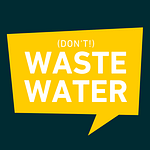
is on Linkedin ➡️
Full Transcript:
These are computer generated, so expect some typos 🙂
Antoine Walter:
So, hi Maika, welcome to the show.
Maika Pellegrino:
Hi, thanks for having me.
Antoine Walter:
So first I hope I pronounced that one, right? Usually that’s part of my housekeeping, but I didn’t do it that time. Micah is that the right way to pronounce your name? Okay. Is the right way. Good. You’re based in Toronto right now. So what can you tell us about Toronto that people would dream to go there once they can?
Maika Pellegrino:
We have beaches. Oh, really very good beaches. So even if it’s a Lake beach is very good, like you really can enjoy summers in Toronto.
Antoine Walter:
So you see, when I was thinking of Toronto, I would never thought of a beach. So that’s really a good one. So thanks for sharing that one. Actually watch me have a terrific accent from a first question. When I was checking your path on LinkedIn, I saw that you studied and I have to read my notes for that engineered year MBN Tel, which I would roughly translate as environmental engineering. Is that right?
Maika Pellegrino:
Yeah. So I actually started like in Brazil, I started as engineering. You don’t start on a specific engineering. I started as engineering and then I moved to chemical engineering and at the end of chemical engineering, you can choose more like fields you want to follow. So I followed environmental at that point, I was focused between thinking about food industry and environmental, but I guess like my heart was stronger than my stomach. At that point, I ended up in environmental and I always like it like outdoors outside animals and everything. So
Antoine Walter:
That was the environmental element. But how did you move to water inside this environmental bigger topic?
Maika Pellegrino:
Yeah, but I was working in an environmental. I was already working with water somehow. I was working at first with groundwater remediation, which is basically treatment of groundwater to kind of be injected back in the soil. And then I was working with water resources, but it was basically working with the water and wastewater plants and where tunes tow. And what’s the level of treatment required to not affect the water resources. So it wasn’t readily working with the water is water treatment in, in a certain way, but just as environmental engineering that was not paying the bills. So I kind of need to go for something that like, anyway, I was like a recent graduated engineer, so environmental was not paying the bills. It was like super overlooked in Brazil. So at that point I had the opportunity to join Degrémont which is SUEZ nowadays on the water and wastewater interests, pure water and wastewater treatment, but it wasn’t so connected somehow. Like there was like a lot of knowledge that I got gain on my first years that I could apply at Suez at the time. And he just kept going.
Antoine Walter:
And so your carrier inside Suez brought you to Canada where you stayed.
Maika Pellegrino:
So yeah, so actually we pushed like me and my husband and we want to, to move out of Brazil just to experiencing something different. And he was good. That was, allow me that opportunity to continue in the same company and doing the same thing. At the time we moved to Montreal, we thought he would just spend a few years and go back to Brazil. But 13, 14 years after here, I still am. I, and I don’t think we are coming back soon, but anyway, kind of, kind of that grow in my heart.
Antoine Walter:
Interesting here to me is you mentioned that at the time you were working for demo, which is an EPC company, basically, if you want to make it simple and now you’re working for Jacobs, what’s your role at Jacobs and how did you switch from EPC to really engineering? Yeah.
Maika Pellegrino:
So when I started at Ramon in Brazil, it was it is an EPC company. So I was involved on the entire treatment process, I would say, like from raw water to distribution and either as application engineer choosing like every single step and designing every single step or as execution engineer as well, like kind of participating on the procurement in going to site overseeing the construction, commissioning the plant. Like my first two weeks at Suez was commissioning and wastewater treatment plants. So in Brazil I was on the EPC chain. So I was seeing like the whole, the way business was done is different. When I moved to Montreal to Suez in Montreal here, the municipality, the way business are done is different. Like the PC does not have much room here. Like they don’t have much space here. So we were basically just delivering one equipment in a treatment chain design by a consultant engineering company.
So after a few years, my first few years here, it was actually good because it allowed me to see different process in, it was a small projects, different process in a number of process or like the number like as EPC in Brazil, I got participated maybe to 10 projects in Montreal. I got participated in 30, 40 projects or because they were small, like then you get more number of projects, but I was missing to be part of this food chain and the decision on the pure design before the decision maker, like when you do the decision-making. So I moved at that time to another consultant company in Montreal, because I want to go back to the designing and not just focusing in one process, but like focusing in the entire plant. Now, as in Jacobs, I’m a senior project manager, design is still my love like this. You what I like to do, but I think in the water industry, you cannot just be a pure project manager. You need a very broad technical background, and I still have the chance to actually do some technical or even coach people in doing the technical. So it’s not just pure project management. It’s a technical project management at the end that allows you to be part of the design and you sign off and every single deliverable be a client. So you kind of need that technical knowledge and you participate on the technical side.
Antoine Walter:
Actually, you raise a very good point with this elements that the EPC job is not really the same in Brazil than what it might be in Canada. And it’s certainly not the same than what it, what it is in Switzerland or in Denmark or wherever in the world. And I like to sketch the water industry as a pyramid. You have the end user on the top of that pyramid, he’s owning the plans. Then you have the consultant engineer. So the place where you are today, which is basically the one telling the end user, how it can solve his problem, then the EPC has a bit of the process knowledge, but it’s rather there to put all the equipment together. Then you have the OEMs beneath the EPC. That, will be doing this single parts. And then at the very bottom, you have the suppliers to the place where I am. For instance, today, I’m sometimes wondering, you know, OEMs wants also to go a bit into the EPC world, the PC wants to do everything and say they can be a one-stop shopping for the end-user and consultants, if you go to the website of Jacobs, for instance, it seems like Jacobs can also do everything. So it sounds to me like the borders between all these words are kind of fading. Is it something which is fully wrong or what’s your opinion? There
Maika Pellegrino:
You are not wrong. And I really depends on where you are in the world and like what’s happening. But even if you takes Suez, for example, they can be apes that can play a role as OEM. They can pay a role as end users because they do operate some plants. So yeah, there is no distinctive line in, I think that’s part of the beauty of the industry.
Antoine Walter:
So to focus back on, on what you do today, you’re working in a consultant engineering company. Where would you say that your job starts on a project? When do you get first involved and who is your interlocutor?
Maika Pellegrino:
So where am I where my job starts in the project? Yeah, it’s a cycle as well. Right? So where if you take a specific project where my job starters is actually delivering a good project to a client that we recognize your like competence, and then he wants you to be in a nother project coming. So you would be like in kind of like making your client happy at current project. And then for the upcoming project, we would be involved in if the client needs to help out them to tailor their request for proposal, if he has questions or anything like this. And then once that request for proposal is out, I would participate on the proposal itself. And then if you win and then you start executing the project, but you kind of have to do a good execution, otherwise you don’t get the next chance. So that’s why it’s like a cycle. So I’m glad to be part of the entire cycle, like from execution to proposal. And when we were talking about the execution, you have the, sometimes you have the planning stage and then you have the design stage or in the construction stage. So I’m also, I also participate in all of these stages for different projects in different time. So it really does give you like the entire cycle.
Antoine Walter:
The reason why I’m asking you that is because I was cooking a provocative question. Don’t take me wrong here. I don’t want to put you in a bad position, but you might be seeing behind me. I have this water treatment handbook from Degrémont And let’s say, I’m an end user. I take that book. Okay. It’s a 1,500 pages I have to digest that it’s not very easy, but there’s also a summary. So I could go directly to my problem and see the issues. Why do I need a consultant engineer to help me out? I mean, come on, it’s water. It’s easy to treat. Isn’t it
Maika Pellegrino:
It’s it is if you know what’s happening first, but in every single project or every single concern or issue or challenge is very specific, right? Like it’s not about just taking the book and reading. It depends on you are the end user. You have some sort of knowledge, but first, do you have the workload to do it second? Do you have all the disciplines inside that municipality to complete the entire project? And other things you have to keep in mind is do you know, have all the knowledge about the regulation, about the environmental that’s going on? Like every single water quality is different. Like for example, when I was in Brazil, our biggest issue was not biggest, but one of the turbidity was around around 700 NTU in Canada. Turbidity is 0.5 NTU. So there is so much variation and quantity, water quality, but the challenge of the environment, even how much money you have for the project who is your end user, not the operator, but like the community, what the community wants, what the community is able to pay for. So you kind of have to get all of this in the table and, and make it the best you can for that, like find the best solution for that project. It’s the amendment. We will help you, but it’s just a tool.
Antoine Walter:
I said it, I mean, it’s a provocative questions sorry but, but I fully, fully subscribed to your point, actually, if I get you right, the thing that’s different than every project is the water. There’s no two water, which are exactly the same. So what is actually the, the first question you have to raise when you’re on the new project, is it to draw a water sample or what is it?
Maika Pellegrino:
It really depends on like, the product can be very broad as well. I have worked at, in projects as like beating in projects as EPC in Brazil, that you don’t even have a water quality. So the first thing you go, it’s get a boat, catch the middle of the river and sample and do like bench tests and pilot tasks. But I think the, actually the first question I would ask myself is when you get a call from my client is like, how can I make this work? What’s the approach I can take on this project that can lead us to the project objectives, that they can make this a successful project. So it’s more like how you’re going to approach this. And then you use your knowledge to develop tasks as part of this approach, but like how you’re going to approach what it makes sense to approach. That’s the first question I asked myself,
Antoine Walter:
You mentioned the various elements, which can be far beyond technical aspects. Like how much the community is ready to pay for treatments. What are the regulations and all that stuff. That’s really important inside the decision metrics. I guess, how many different customer do you manage? It’s not a nice word, but let’s say manage at the same time is it’s like a handful, 20, 1,000, 1?
Maika Pellegrino:
It’s a handful, at least. So you start by the community like for the residents who was actually going to be consuming that water. And then if you hearing on tire, for example, a lot of the municipalities are two years. So do you have the regional who is responsible for the supply, but you have the local municipality who is responsible for distribution. So that already like adds you some stakeholders. Then you have the ministries that are different stakeholders inside the regional municipality or the local municipality. You have the operations, the capital team. So like one house, the money, the other one is actually going to have to deal with this after. And then you have, you are always dealing with the vendors and the contractors. Yeah. It’s the number of different people and different interests that you have to deal in. Every single project are more than 10 for sure. And that’s where I always say, that’s not just like pure engineering, like just not the technical side. If you don’t have like a soft skills to understand all of this and communicate with all of these levels, you cannot get a successful project done.
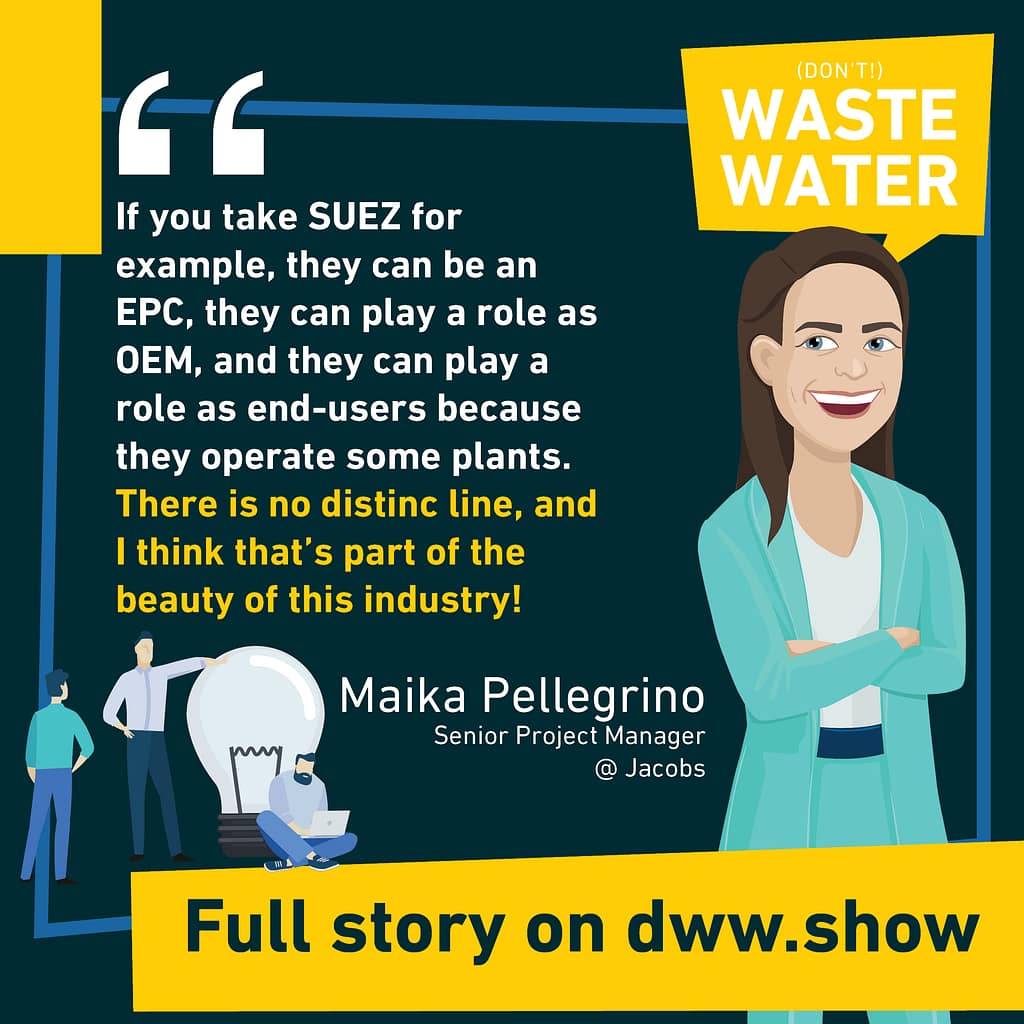
Antoine Walter:
So what’s the most important, soft skill you need to deal with a project
Maika Pellegrino:
It’s communication, it’s communication. You got to communicate well, communication is the most important thing. And not just send any mail like nowadays, it’s not just a mail. You still kind of have to pick up the phone is you have to act like active, listen, what they are saying and what they are not saying.
Antoine Walter:
You mentioned that you have to deal with the vendors and the contractors, and you know, I’m not cracking a secret for the people that were listening to previous episodes of that podcast. I used to work as well for Degremont and SUEZ in the past. And I remember sometimes when I was visiting for the first time, like a large industrial who had to treat his water, he was envisioning big shops that I would have in my head office. And on those big shelves, I would have a fully blown treatment for his water. And I would just have to pick like treatment and process number seven, number three, and number five, buy back them in a continuous sending to him and he can deal with that. And we both know that’s not true. There’s there’s engineering involved, but on the other end, there’s also a certain part of truth here. I think every single vendor or contractor tries to have his standards and in between there’s this fine line of how much engineering is involved on each project. How would you define that engineering is it’s fine tuning a standard, or is it more trying to build upon very single step and make it a nice plant? I mean, where would you put the cursor between those two extremes
Maika Pellegrino:
Engineering is getting all these packages that are on your shelf and it’s like a Lego at the end. Like you have the Legos, but you can Butte, anything you want with that. Like any single person who build a Lego is going to look at different at the end, the engineering part of it it’s to get the Lego pieces and build what your client wants, what the community needs. That’s where the engineering or the consultant engineering enters like in are able to do it, able to help the client to get to the final project.
Antoine Walter:
Let’s dig a bit into this one. You mentioned build what the client wants, but let’s say the client is a fan of membranes and a, you think the right treatment is something which does involve membranes. Do you try to fit in your process? What the client loves and ones, or do you convince him that he’s wrong?
Maika Pellegrino:
I think you have to know when it, let it go. Like you have to show the technical aspects, the advantages of one technology and the other technology. But at one point, if he is only comfortable in operating in maintaining main brains at the end, you cannot push for something that he’s not comfortable with because he’s the one who’s going to be dealing with this in the next 20, 25 years. So he has to buy in, like, he doesn’t matter what you are offering, they have to buy in and they have to take ownership of this later. So it has to be an open conversation. You can show the consultant can show the benefits of every single one and sometimes maybe what they want and they don’t have the budget to pay for it. Like, so it’s always like in every single aspect, there is a compromise, I think, in both sides. And that’s what it’s, it always comes back to me. And when I say client, I’m not necessarily just talking about the municipality, the final client is the residence, right? Like, so the whole idea is to give them she improved their water quality and to make sure they have a reliable water coming through there.
Antoine Walter:
So does that mean that you try to build one process or do you pre-build in parallel, maybe two, three options. And then by discussing with them, you refine and you choose one out of the three,
Maika Pellegrino:
A lot of ways that can be done. So usually you start a process when you don’t have anything defined, you would start for like a feasibility study that you would consider different process and look at the cost benefit of every single one of them in way with your client, what would be the best option? There are some, for example, in Ontario, there are some regulation that allow on your planning when you are planning for a new project or you’re planning to add a treatment, or if you’re planning for expanding a plan, or they do require you to follow a planning process, which is called [inaudible] class environmental assessment, that you have to take all of these in consideration and not just what again is not what the client necessarily what the client wants, but what would be the best for the environment and environment accounts, social, economical, natural vegetation, animals, the community itself. Like if the construction would disrupt the community for a long time, maybe it’s not the way to go. So all of these aspects is taking in consideration in every single project. So when we say what client needs, it’s a little, it’s not like what a single person needs. It’s what, it’s more broad.
Antoine Walter:
And yet, in the water industry. That’s the beauty of the, of the water treatment as well, is that you can have several ways to treat the water. There’s not one that works in all the other that don’t, there are advantages and drawbacks for each of them. So, you know, if I’m walking for instance, in Switzerland and I visit some plants, I bet you, I can recognize who was the consultant on each of the plants, because you can notice that there is kind of a favorite way to do things which is slightly different from one company to another, which leads me to that question. Do you personally have a favorite treatment? Do you think Jacobs has a favorite treatment or are you fully agnostic?
Maika Pellegrino:
I think in general, people are not agnostic and I cannot say Jacobs has a favorite. I think it depends on which engineering at Jacobs you were talking with. I of course have my favorite ones. Like I’m a little bit averse of chemicals. And I say like, if you can treat without why you would add chemicals, right? Like if you have solutions that last, like why you would add chemicals to a water that is already good, especially in Canada, like in Brazil, you couldn’t like you need them, but in Canada it’s the water is, they are so lucky. The water is already good. So why would you add more stuff to it? But doesn’t necessarily mean that I’m gonna be able to work on in this type of project here. So,
Antoine Walter:
So you try to avoid chemicals as soon as possible. I get, that makes sense to me. Well, let’s say, try to make up a fictive example. Let’s say I’m a vendor of a full word, ultra filtration. I mean really try to making something up which doesn’t exist, which is difficult, but no, let’s take a real example. Let’s say I’m a supplier of ultrafiltration skids and I happen to have a good relationship with you just because in the early stage of a project, you know, that I would support you. I would make calculations for you. I would not ask you what’s the project who’s the client. I would just help you. Would that influence you? Or would you just keep saying, you know, you’re just another supplier. I don’t try to trick you. Sorry, but I’m just curious
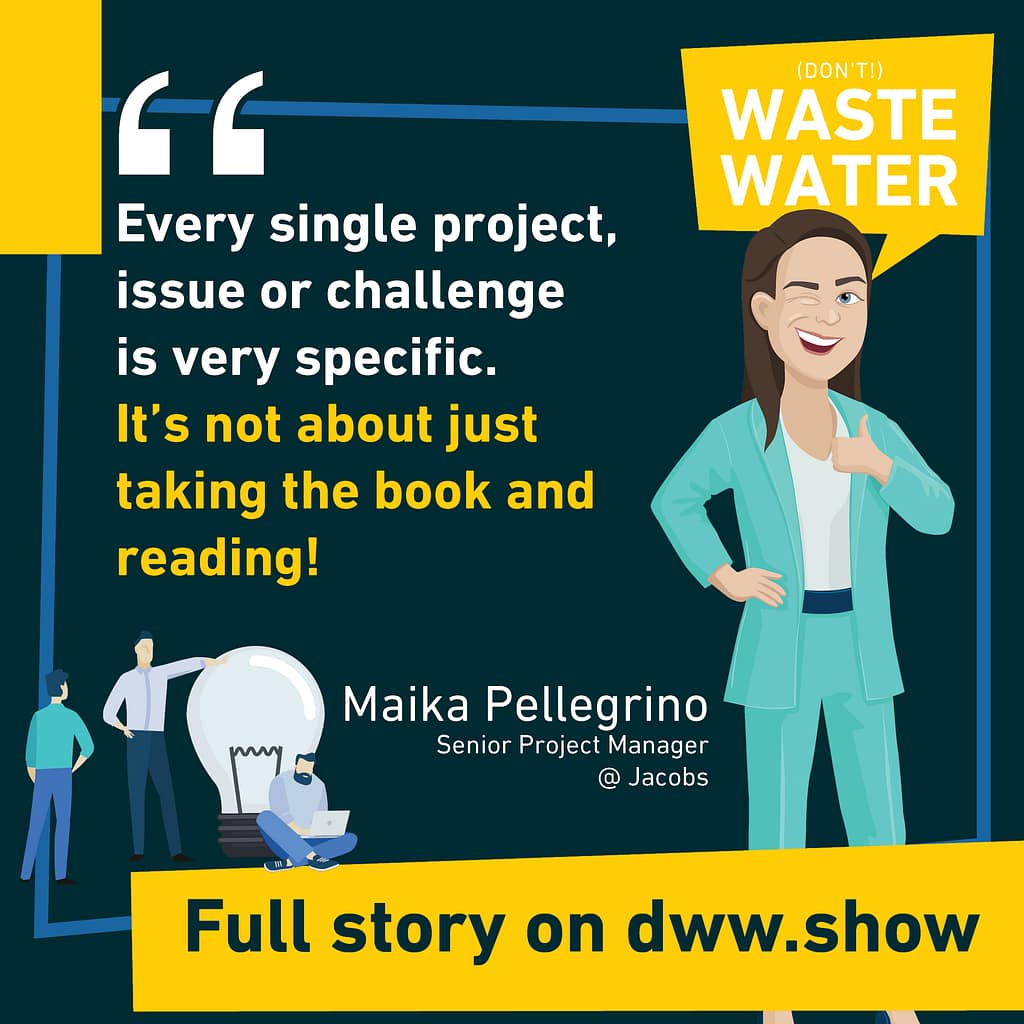
Maika Pellegrino:
No, I know it’s, I think the relationship is important, but I don’t think the decision would be made just because of it. Like you see, you have a professional responsibility to offer or discuss with her or presented to your clients the best options.
Antoine Walter:
And what’s the level of granularity up to which he would go. You know, I mentioned that pyramid and you are quite at the top of the food chain, if I might say so, if now we’re a supplier of valves or pumps come to you and say, Hey, I think I can help you because you know what, if you replace that valve by that valve, it’s going to be much better. Is it something you would really consider or you, you have all these other stages of the pyramid in between so that you don’t have to deal with every single little detail of the plans.
Maika Pellegrino:
I already had to deal with every single detail of the plant, like up to the what’s the material of this nut you’re going to put, but nowadays I’m less involved literally, but I think it’s important. I think if it’s supplier or the orient has something interesting that can make that project better, why not listen to them? But then you just have to be cognizant that you have to weigh this options and weigh the options and see if it’s really would improve the project.
Antoine Walter:
You’re opening a very interesting door here. If I come to you and present you a brand new process, and I have many lab studies that shows it’s wonderful, it’s nice. It’s a 30% better than whatever it exists, but I don’t have a full-scale reference. What would be your position? What do you think is the right position as a consultant? Where do you put again, the cursor between the risk? Because of course I never built it full scale, so I might be just making up my numbers, but on the same hint, it looks interesting. It looks promising. So how do you deal with that
Maika Pellegrino:
First? I would tell you to go see the, when he spoke clients as well, not just the consultant because they have to buy, like we were discussing, they have to buy in, in a new technology. They are the one financing it and they are going to, to be there with this. So they have to have the courage to bat in a new technology, new, innovative technology. And if the vendor, if the supplier or the vendor could, he has to work, like all the ans not just the consultant, because the consultant alone, he will never have enough for like her, the voice, not going to be strong enough to get this going by itself. But it’s a long way. Like from what I have seen most in Canada, the clients are very conservative and they are not open to pilots, gave results in a full scale project. And not even that, they are not even open to test fully scale results from a different region or country in a food scale plant in their province or their countries. So even like the making something that it’s very like establish in Europe and bring it to North America, or if it’s established in States and bring a chicken under, or that it’s not, things are done completely different. And they want to know if their neighbor has done it. And if it has the word,

Antoine Walter:
Where would you set the limit? If I come with a process from the UK and I go to Canada, it might be difficult to get accepted. If I come with something from the US and I come to Canada, is it any better or does it really have to be from Ontario? So that Ontario accepts it?
Maika Pellegrino:
For sure, like you asked you, Canada is already easier, any new entering, like regulatory of every single province, for example, Quebec has their own approval of technologists. So it’s not about offering is about getting them ministry of environment. You get that technology approved. So if it’s not approved by the ministry, you cannot install, right? Like first I think there is more, but there’s more harmony. Like when we comes to like North America, then like rest of the world. But I also, because there is like organizations as Aww, WWE WEF and like the knowledge, the sharing knowledge, and then producing knowledge in between Canada and us are large. Like we work with the same organizations
Antoine Walter:
To your personal experience. What is the most risk-taking or innovative process that you had to deal with? And how did you get that? Working through all the steps of conservatism that the water market might have
Maika Pellegrino:
The most innovative one, I guess I haven’t seen this project to the end, but I think the most innovative one was the ozone system for Montreal wastewater treatment plant, which is huge. It’s just you in execution. And I was the application engineer at four different months at the time. And we were trying to use the existing shaft outfall shaft to mix the ozone with the wastewater. So we were talking about one meter and a half ejector inside a 20 meter diameter shaft. So like how to build this, how to make it work. So that was really thinking outside of the box, but something that it’s not innovative, but I think it’s actually old tech knowledge that I think it’s overlooked by. Most of the clients is actually any biological treatment. Like whether it’s for ground water or surface water, if you add a biological treatments filtration in your treatment line that can give you more stable water in the distribution system. But since you have lost control of what’s going on, I think usually I, we get a lot of pushback from the municipalities just because it’s unknown, right? Like, you know, it works, but you don’t have control over it. So
Antoine Walter:
It’s difficult to trust nature. And to say those little biological things that are going to eat out the pollutants,
Maika Pellegrino:
And that’s the, actually the beauty thing, the beauty of it, like you are using bacterias to do the job for you. It’s way more like energy is way less chemical consumption is way less. Your end water quality is way more stable and why not, but just because it’s less, I feel that because it’s less understood, it’s less controllable. It’s usually not considered easily
Antoine Walter:
3D, less controllable because you, you could say that today with the new ways to measure everything activity, BOD COD, so many parameters, it might be easier to control than it was maybe 30 years ago.
Maika Pellegrino:
It is easier to control than three years ago. And it’s, they even an how to, like right now you can have like ATP counts on the plant. Like before you, you don’t even have an like a range of ATP that would be considered like something you didn’t know what would be the ATP. Just say, if it’s a process is working or not, and now you have like guidelines on those and you can do the ATP count on your own lab. So it is better to control. Men are things less controllable because it can be more unpredictable. Like something can get upset and then you have, you need to recover and it’s doable. But from my experience, it doesn’t get that upset. Like it’s kind of rare, but people, they have that fear that like, what if it gets upset, but we’re going to do, like,
Antoine Walter:
Would you think that might be linked with some, let’s not use the big names, but lost knowledge? You know, in that, in the very first episode of that podcast, I was interviewing Laurent De Franceschi and he was referring to one of the guys that taught him a wastewater treatment. And the guy was watching the sledge Bessons and would tell you, the sludge index is at 17, and then you could do a chemical analysis. And that would be true when nowadays, maybe those guys really passionate about that job are retired for two decades now. And maybe there’s a bit less sexiness and attractiveness with this industry, which means that not all profiles are attracted to operating a dirty and smelling wastewater treatment plant. Do you think that plays a role or is it really,
Maika Pellegrino:
I do think it plays a role. I do think it’s plays a role. Like if you, when you get operated a biological treatment and understanding, and like you does have a feeling that it’s gonna happen. And, but anyway, the world is changing somehow. So like people don’t give that time to understand the deep of the thing or to spend time. Like everything is so fast nowadays that like even myself and sometimes I fear for the young engineers that everything it’s for tomorrow. So you don’t have even time to assimulate that knowledge that you acquire today.
Antoine Walter:
You know, when I was in engineering school, I was told that as an engineer, you have to be able to take, you know, a small piece of paper and do your calculation in front of your customer. And that has to be roughly accurate, but I was told that, but I never used it in fact, because everything nowadays can be automated made by a smartphone made by a computer. Do you think it’s still important to know this, these roots of engineering? Or is it just like saying you want faster horses when in fact you want a car?
Maika Pellegrino:
I think it’s just too important because it gives you the sensibility of the numbers. Like if you cannot do by hand, or if you cannot, if you don’t understand the units or if you cannot do by hand, or if you cannot do yourself or like, kind of have the principle in your mind, you don’t have sensibility of the numbers. And then how you know that if that whatever the software or tool or Excel gives you makes sense or not, when you do it by hand, it gives you some sort of like scale. Like, does it make sense
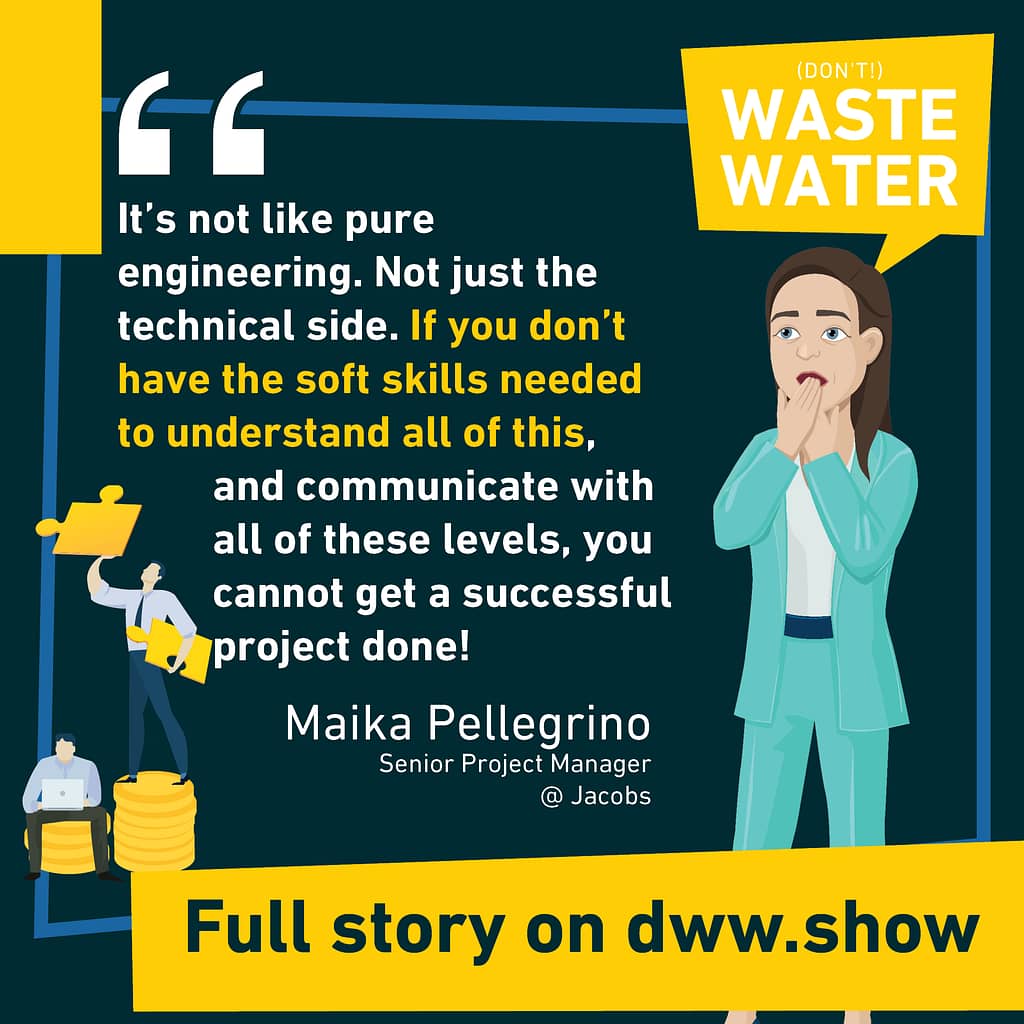
Antoine Walter:
Some month ago? I had Transcend on that same microphone and Transcend has a strong take at our industry. They offer a software which claims to automate the first 30% of the engineering. So of course, when it comes to advanced engineering, there’s still a human who has to understand and get all those, those things sorted. But their belief is that the first 30% of rough engineering first steps can be automated. And actually they don’t even believe it. They also do it first. What’s your feeling on that? Do you think that the early stages can be automated and if yes, up to which points can we automate things?
Maika Pellegrino:
I think anything can be automated and if it can be automated is because it’s pure logical. I think the part that it’s, this you’re there before you automated, or even to read the results after of the automation and that’s engineering, like how like to be automated, you need to fit with data. And that data that you got from your field trip that you got from talking with the client that you got out of for like water quality analysis, anything like how you feed and what of the range are going to use that cannot be automated in how you make that project is specific for that location. And for that particular artist that cannot be automated. And after if it’s, it’s just helping you building a model or making like hundreds of interactions to optimize that, yes, let’s use this too. But if you don’t give good input and if you don’t understand the output, then not automation is worthless.
Antoine Walter:
So shit in, shit out. That’s the same. And of course, if you don’t understand you, you cannot see if it’s and you just have to trust what’s your, your program is giving you, you mentioned earlier a white elephant in this industry with the Montreal project, which lasted, I would say over a decade or roughly a decade. Is it an exception or do you have also in your daily portfolio of projects, you’re dealing with some of them which are really lasting for years?
Maika Pellegrino:
No. Yes. There are some projects that has been executed within the schedule. I have been through a lot of projects like that, like that they are not always complicated or like super political. Yeah. There is, there is projects going on. Like, of course you can never know, like when sometimes you break ground, you never know what’s gonna find and something can delay construction or whatever it is, or regulation. I have been to projects that regulation changes in the middle. So you have to restart things can happen. But I think we are getting better and better and better in actually executing them within the forecasted schedule, but
Antoine Walter:
Would be the average schedule of a project. Let’s say wastewater project, for instance,
Maika Pellegrino:
A wastewater project. So I would say like 20 years and why I’m saying this, because if you just, everything is starts at the master plan level, like how discriminatory is going to grow. When I’m going to need this wastewater plant, how much water they will be consuming. And then if you don’t identify it from 10 years for now that you need expansion, and then you don’t start putting the budget to actually construct that 10 years for now, you’re not going to have a project. So two years of construction, it’s nothing. When you look at the 20 years, like the municipality, the clients, they do start looking at this 20, 25 years before they actually need to invest on that. And actually, if they don’t, then that’s when they started doing projects that is just putting silver tape here and there. And it’s not the best outcome. Like you kind of need, you need a good planning phase. And then to think how you are going to actually do the procurement, it’s going to be a conventional procurement. You’re going to go through like an EPC or like PPP. And like all of these, they start way before then the actual project. So the timeline of a project it’s very large.
Antoine Walter:
That means that as a consultant engineer, you re are in a, in a long-term relationship with the municipality,
Maika Pellegrino:
You are in a very long term relationship.
Antoine Walter:
That’s when things go right. But does that happen also to see some divorce?
Maika Pellegrino:
There is a lot of divorces. I have seen divorces. I have seen marriages in, if you want to keep Marin, it’s like any sort of time and you have to do your best. You have to listen to your client. You have to, should be reasonable when know how to communicate with them.
Antoine Walter:
How do you deal with the children if you divorce? Because basically all the plans, you are an external brain. It’s hard to continue to work. If you don’t have a brain.
Maika Pellegrino:
Yeah. You find a way there’s always a way you bring different brings new. There’s always a way.
Antoine Walter:
Okay. That’s I had never thought of that, but you know, these 20 years timeline that you mentioned, it’s a huge commitment between a municipality and their consultant. And then it builds on a lot of thrust and
Maika Pellegrino:
The municipality not necessarily needs to carry the same consultant in over this all these years. And sometimes there are some consultants that just do the planning phase. There are some concern consultants that are more focused on, on the detailed design construction, but if every single one of them do a good job, then it’s easier to pass the stick between one to the other. I have seen like, if things are not documented well from the previous consultant, sometimes you kind of have to start from scratch or like kind of rework somehow, because you kind of have to make sure that if it’s not documented, you cannot know if it’s the good, the best way to do it. And since you have a responsibility to know how it’s going forward, you have to double check. So that happens.
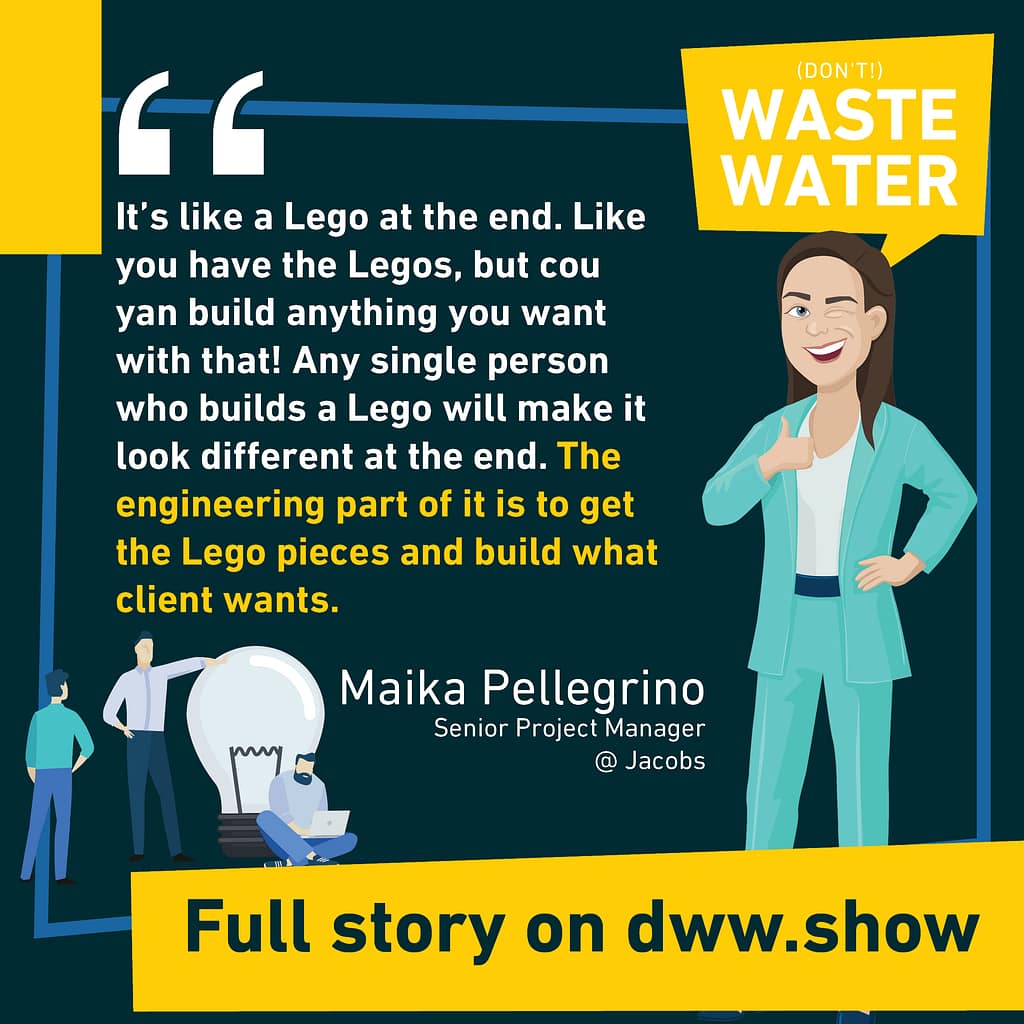
Antoine Walter:
I have to be cautious of your time as well. So sorry. I’m always the one who asks too many questions, but I still have to in this deep dive that would like to raise to you the first is what is the thing you’ve learned the hard way in your job as consultant engineer?
Maika Pellegrino:
I would say it’s that the political behind the project, like there are things usually water and wastewater upgrades in municipal treatment plants don’t bring volts, right? Like the residents don’t know what’s happening. The community does know what’s happening. So the budget is very limited. So I think the challenge is like how you justify that budget and like how you make the high management and the municipality understanding that that is required and how you get their attention that it deserves. And at the same time be cognizant that like, whatever project you were working on it’s taxpayers’ money, right? Like, so you have like a professional commitment to do your best and like use your best judgment. So I think that, I think that would be the hardest thing in as a consultant engineer.
Antoine Walter:
Very interesting one. I have a last question, which is actually not a question because I promised myself to stop asking that question. So I’m not asking the question, I leave it up to you, but we have a 85, 15 gender quotes in the water industry between men and women. And I’m just wondering as I said, I’m not asking the question because I find it quite unfair for every woman to have on that microphone to have to have a strong opinion on that. So I don’t want to push it more than it should, but do you have a strong opinion that you you’d like to share here? Or should we just say that we are to what our professionals and our gender has nothing to do with the discussion?
Maika Pellegrino:
I would like to say that gender has nothing to do with discussion, but I see you see a lot of business being done because people are more comfortable doing business between the same gender. They find a way to have an easier conversation I use or talkies or communication. So we see you, I see you that don’t think a woman has equal opportunities, but as a woman, I think that the gender discussion has to keep going in general, not just on the water industry, like we still don’t have the same opportunities. And for the water industry, I wouldn’t expect a 50% ratio just because I think sometimes don’t interest women as much as men like the construction part of it or the, but the important is just to have equal opportunities.
Antoine Walter:
And do you think you have those equal opportunities today in Canada for instance, which I would imagine as a forward looking country,
Maika Pellegrino:
I would say Canada is, I, I think it’s different from Brazil, but not necessarily say it better. For example, from my experience in both countries, I have worked some in us as well. They all have at one part of the chain, one of them have different concepts or like different inequalities. Some, I think here as in the office, you probably have the equal opportunities, but maybe not on the field or like, I don’t know how actually, but like I was, when I was on the field in Brazil, I was actually find that I had the same opportunity, but not necessarily in the office. So I think it depends on where you are and where the country you are. There’s this you room for improvements, for sure. Again, I don’t expect 50% ratio just because women have like different preferences in life, but just that don’t make that a no.
Antoine Walter:
Okay. Here, if it’s good with you, I propose you to switch to the rapid fire questions. Sure.
Rapid fire questions.
Antoine Walter:
So in that last section, I try to keep my questions short and you can of course belong in the answer, but the aim is to be as short as possible. My first question would be what is the most exciting project you’ve been working on and why?
Maika Pellegrino:
The most exciting project I’m working on right now, it’s called crown water treatment strategy for the region of Yorkin, Ontario, where you’re working is investing to improve the water quality for their residents. That it’s most groundwater quality, run water, water with lots of iron manganese. And we are finally moving to treatment removal of this iron manganese, which you would improve the water quality for the residents, like in a way that it’s impressive. Not, not like it’s what they deserve at the end. Like nobody deserves to open at half and half like orange water.
Antoine Walter:
That’s a good one for sure. What’s your favorite part of your current job?
Maika Pellegrino:
My favorite part is brainstorm concept designs.
Antoine Walter:
How much of your job, what percentage would it be that you do without brainstormings
Maika Pellegrino:
The design team like? So I know for this groundwater Truman strategy, we are brainstorming concept designs with the civil engineer, with the structural engineering, with the CAD person. Like we just sit down and see, how can we lay this out? How can we make it work? What’s the best way? What are the options where we can put the new treatment? What’s the best way to connect with the existing that’s on site. And so all this brainstorming and discussion with the other engineers and technicians on the project, just, I think it feeds my mind. Like
Antoine Walter:
I can see how that can be a mind falling. What is the trend to watch out in the water industry?
Maika Pellegrino:
I think it’s something I want to be watch out, but it’s like climate change because it will hit us is already hitting us, but I don’t think it’s poking enough yet. So that’s what I would like to be the trend.
Antoine Walter:
What can we do better in the water industry regarding climate change? There’s two ways looking at
Maika Pellegrino:
One thing is having a design more sustainable to contribute with that, like in the long term, but also considering that the storms are going to hit us more often, like that anything can happen. So you cut when you’re doing the design, you do have to take more in mitigation aspects and not just, ah, like it was here for 20 years, never happened anything. Now it’s going to start happen. Like so you have to consider mitigation in every single project. And I would really would like to see more sustainable designs coming up for the long term, but I don’t think there’s a financial issue with this. And like how usually usually this is more sustainable designs lose on your cost benefit. Then I just questioned myself is the aspects or the criteria he was on the cost benefits that has to be revised to take that in consideration.
Antoine Walter:
Usually we are in a strongly regulation driven industry. So if regulation is not helping, it’s difficult to come up with the good pupil that wants to do better than the others.
Maika Pellegrino:
Yeah. And, and it’s not the consultant or the local municipality that’s going to do this. It kind of has to be pushed from the government. So regulation in anyway, I hope that’s what we have to watch out for in the industry.
Antoine Walter:
Do you have sources to recommend, to keep up with the latest trends?
Maika Pellegrino:
I do like to like besides the North American sources, is it like AWA WEF, ADA Wharf. I am always reading online magazine. That’s called water wastewater treatment online from UK because I think Europe in general, they are way more advanced on more sustainable construction or more like resilient construction or even like more like emerging contaminants. So I do like to read a lot of European magazines or like references.
Antoine Walter:
Would you have someone to recommend me to invite on that same microphone?
Maika Pellegrino:
Yes. I would recommend to someone that it’s completely different, maybe from whoever you have ever interviewed, I will recommend it. Eleonora Allen, which is the CEO of water for people. She’s actually a previous Jacobs alumini, but today she’s dedicated to water for people. And I think he would be a really interesting interview. And then she could bring an idea of the water industry in this countries in development and how it’s water and sanitation for them.
Antoine Walter:
That sounds really interesting. So I’m going to make sure to reach out to her as soon as possible. If people want to follow up with you, where can they find you online, offline, if you want them to find you?
Maika Pellegrino:
Yeah, I would say LinkedIn, I’m not a very good social media person. Like I do not post, like I barely have the normal social media and I don’t look so often, but the best way to reach me would be through LinkedIn.
Antoine Walter:
Well, Maika, it was a pleasure to share this Howard with you. I’ve learned many things on your you’re a consultant engineering word and a bit beyond, so thanks for sharing.
Maika Pellegrino:
Thanks for inviting me.
Antoine Walter:
I hope to have the opportunity to talk about your long-term relationships with those municipalities in in a future.
Maika Pellegrino:
Let’s see where you are. I’m headed on the marriage or divorce,
Antoine Walter:
Hopefully on the good side, but
Maika Pellegrino:
You never know.
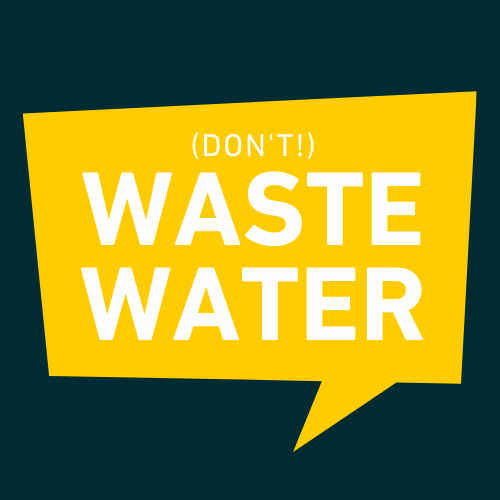
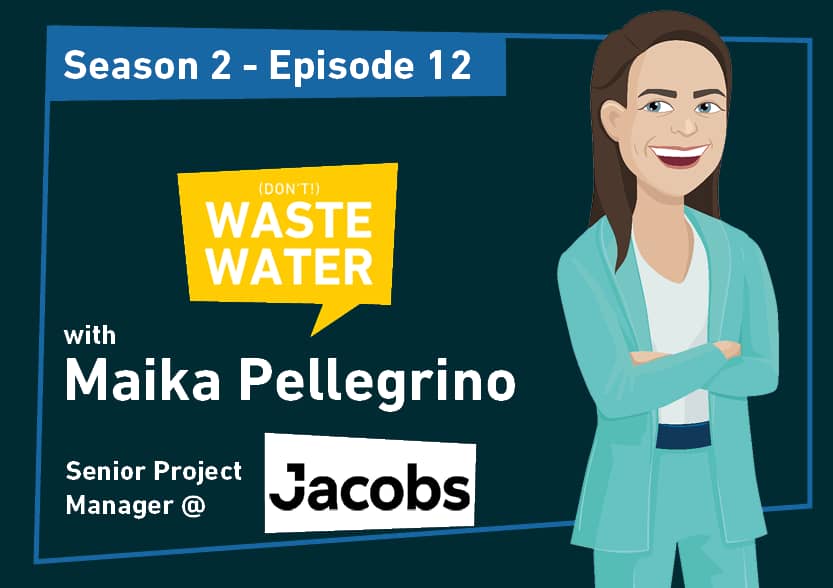

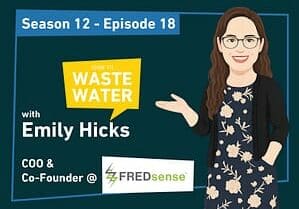
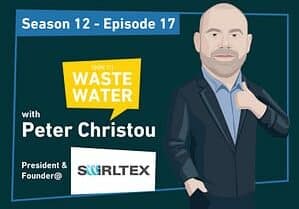
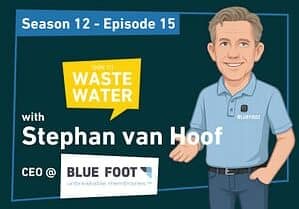
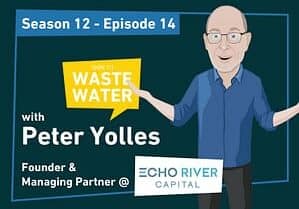
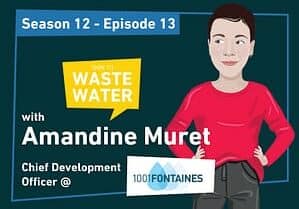

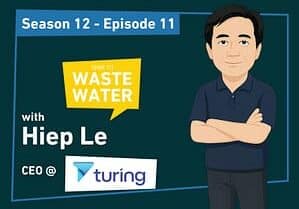
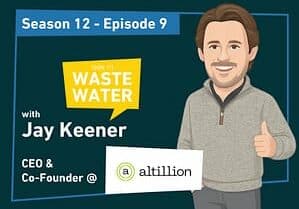
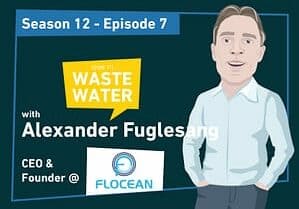
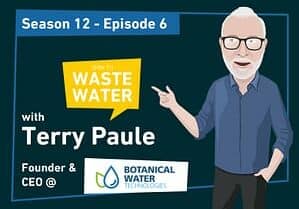
1 thought on “How to Consistently Deliver on the Promise as a Consultant Engineer?”